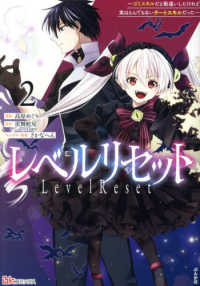- ホーム
- > 洋書
- > 英文書
- > Psychology
Full Description
This book explores the multifaceted experience of suffering in old age. Older adults suffer from a variety of causes such as illness, loss, and life disappointment, to name a few. Suffering also occurs due to experiences related to one's gender, ethnic background, and religion. Although gerontological literature has equated suffering with depression, grief, pain and sadness, elders themselves distinguished suffering from these concepts and at the same time showed how they are linked. Narratives of suffering from community-dwelling elders are interpreted in this book, along with the personal meaning of suffering that lies within each narrative.
Contents
Chapter 1
Introduces the subject of age and suffering. It reports on the literature from several disciplines regarding suffering.
Chapter 2
Introduces cases to illustrate suffering as a form of cultural communication that is spoken through the body, through identity, and through narrative.
Chapter 3
Explores how gender shapes informants' experience of suffering, the way suffering is expressed, and discussion about it in the process of the interview.
Chapter 4
Acknowledges that embodied pain is a significant component in the experience of suffering in later life.
Chapter 5
Explores social suffering because even private, individual experiences of suffering occur in a social milieu.
Chapter 6
Uses cases to examine the uniqueness with which each informant coped with suffering.
Chapter 7
Discusses the morality imputed to the experience of suffering. In part, this morality is revealed through the causes respondents attribute to their suffering.
Chapter 8
Examines three often-used metaphors for suffering. They are: suffering as a threat or attack, suffering as injustice, and suffering as loss.
Chapter 9
Talks about the activity of suffering. Activities give compensatory meaning to an elder's life. An important activity of suffering is to tell an engaged listener a story about it.
Chapter 10
Is the conclusion of the book. It asks the question: Who is the self that suffers?







